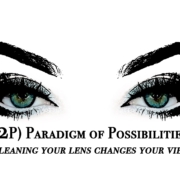We recently connected with Vernita Stevens and have shared our conversation below.
Hi Vernita, we’re so appreciative of you taking the time to share your nuggets of wisdom with our community. One of the topics we think is most important for folks looking to level up their lives is building up their self-confidence and self-esteem. Can you share how you developed your confidence?
While I was raised with a foundation of strength, confidence and self-esteem were qualities I had to cultivate over time. Despite occasional doubts, my journey took a transformative turn when I joined the Marine Corps as a teenager, where I progressively built unwavering confidence because of all that I had to overcome.
When I entered the Recruiter’s office, I was told “not many females are able to make it,” and asked if I was sure. I knew that I was up for the challenge, and mustered all of the confidence I had when I assured him that I was certain. I needed to draw on that confidence many times as a female Marine, and each time I needed to remember that moment, I gained more self-esteem and courage. In fact, I learned to pause and savor the moments when I needed to drawback on that memory.
Those pauses afforded me a moment to collect myself and step into my most confident, best self. When I realized how much power there is in pausing, then I started to cultivate that influence and develop a message to the world: there is power in pausing.
Appreciate the insights and wisdom. Before we dig deeper and ask you about the skills that matter and more, maybe you can tell our readers about yourself?
My sense of purpose is intricately woven with the understanding that I’m walking on the path intended for me by God. Each experience and career choice, though not always clear in their purpose, align with a greater plan. My conviction rests in the belief that, guided by faith, there are no accidents or mistakes in the tapestry of life. While the reasons behind each step may not be immediately evident, I hold steadfast to the belief that God’s hand is guiding me, and His plan is perfect.
After my time in the Marine Corps as a Drill Instructor, I knew I needed to draw from my experiences and that my purpose going forward was to be a voice for those who are not being heard. I started my business, Paradigm of Possibilities, LLC (AKA 2P-LLC), to offer trainings and consultancy for organizations needing help with topics like inclusion, conflict resolution, and more.
My business has blessed me in many ways, and I have learned so much through the discussions I have led. The work I have done inspired to me to get my Masters Degree in Human Relations, concentrating in Diversity, Equity, and Social Justice. Most recently, I have been expanding my speaking career, focusing on Bystander Intervention and education around the “Power of Pause,” which is a term I have coined to describe the need and benefits of intentionally pausing. The Power of the Pause is applicable in most situations and allows us to control our emotions, communicate effectively, and move with purpose.
My nonprofit, the 2P Center of Excellence, supports my dream that youth receive the necessary education to be outstanding upstanders and employ bystander intervention skills when seeing conflicts arise.
Don’t forget: cleaning your lens changes your view!
Looking back, what do you think were the three qualities, skills, or areas of knowledge that were most impactful in your journey? What advice do you have for folks who are early in their journey in terms of how they can best develop or improve on these?
The unwavering support and wisdom imparted by my parents and grandparents played a pivotal role in shaping my resilience. Their guidance taught me to persevere and be optimistic with my words and energy.
My strong work ethic was instilled early on, spending countless hours in the garden with my Granny and tending to various tasks related to my dad’s equestrian pursuits. Caring for horses and animals further ingrained in me the importance of dedication and responsibility.
Undoubtedly, my generosity finds its roots in my mother’s influence. From my earliest memories, I witnessed her actively engaged in the church, whileselflessly caring for the sick and homebound. This spirit of giving has become second nature to me, a legacy I’m proud to carry forward. Carrying on her legacy is important to me and one reason I was drawn to starting a nonprofit organization for youth.
Before we go, maybe you can tell us a bit about your parents and what you feel was the most impactful thing they did for you?
My wellspring of optimism originates from a multitude of sources that have shaped my perspective. From the unwavering support of my family and mentors to the lessons learned through overcoming challenges, I’ve come to realize that a positive outlook is not only a mindset but a conscious choice. Embracing the belief that even in adversity, there’s potential for growth, fuels my optimism and colors my approach to life. Taking a principled stand against racism and inequities has been a fundamental aspect of my character. Drawing from the values instilled in me, I am committed to advocating for equality and justice, refusing to remain silent in the face of injustice, and all began for me at home.
Contact Info:
https://boldjourney.com/news/meet-vernita-stevens/








